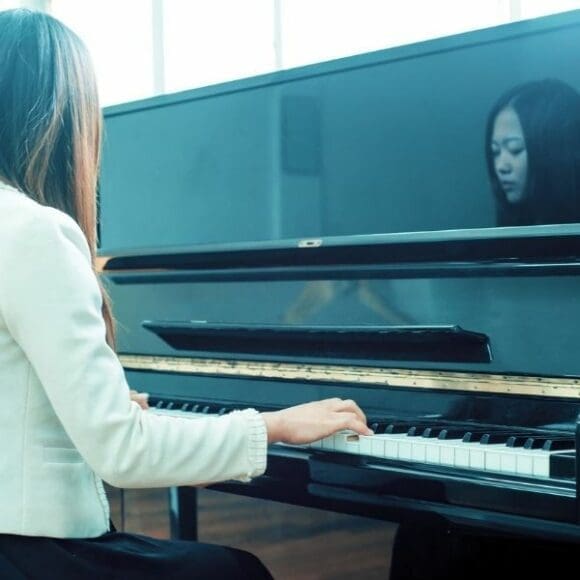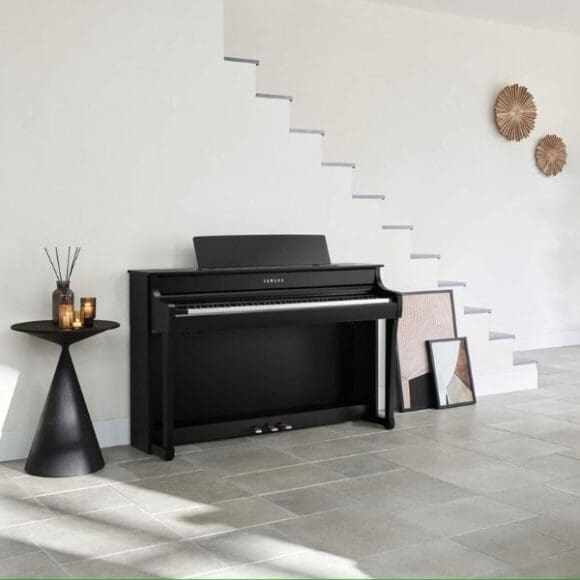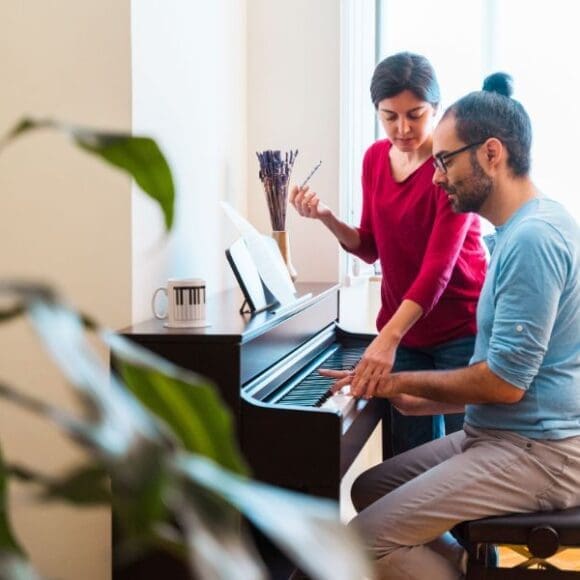
Stand up straight. Sit properly. Don’t slouch.
Good posture is important for health – but did you know that it can also affect your ability to play the piano?
With proper poise and positioning, your body can enjoy full freedom of movement that will not only help to prevent aches and pains but also allow you to fulfil your full playing potential.
Want to discover the ideal posture for playing the piano? Here the team at Richard Lawson Pianos share their top tips.
Are you sitting comfortably? Then we’ll begin…
Piano posture checklist
· Check your stool position
First things first, check your stool position in relation to the piano itself.
Too close and your arms will be scrunched up against your body restricting arm movement when you play. Too far away and you’ll overstretch and struggle to reach notes properly.
To check you’re getting it right, when you look down your elbows should be slightly – but comfortably – in front of your stomach when your fingers rest on the keys.
Once you’ve found this sweet spot, next you need to consider where you’re sitting on your stool. Ideally, your bottom should be positioned in the centre, marginally closer to the front than the back – but not so near the front that you feel unstable.
· Assess your piano stool height
The most common problem people encounter here is positioning themselves too low at the piano, presuming that their feet should be flat on the floor. Yes, feet on the floor is ideal, but arm positioning is the most important factor.
Sit too low and your forearm will slope down toward your body. Too high and your arm will drop the other way causing pressure on the wrists.
If you’re using a standard chair, or have a stool that isn’t adjustable, try raising yourself up with folded towels or sheets – cushions can be used but are liable to make you a bit wobbly.
Ideally, your forearm to knuckle should run parallel to the floor. Achieving this might mean feet dangle in the air – especially for youngsters – but a small footstool, or even a stack of books, can rectify the problem and give firm footing underneath.
· Sit tall
It’s important not to slouch when you’re at your piano but try not to be too ridged either. Slouching will curve your back out of alignment and create tension in your neck but sitting like a soldier will make you too stiff.
Instead, sit up tall but drop your shoulders.
Not sure you’ve got it right? Pull your shoulders up to your ears and then allow them to drop. Where they naturally fall is the right position and will keep your back fluid and relaxed.
· Use your arm weight
For real playing depth it’s not just finger motion but gravity that you need to concentrate on. And the key is to use the natural weight of your arms to your advantage.
If your arm is running parrel to the floor you can control gravity and use it to your advantage adding power to your performance when needed.
· Find the right hand and finger shape
Drop your arms to your side and take a look and the natural shape of your hand when it’s relaxed. Typically, the thumb is straight, whilst your other fingers have a slight curve – this is the perfect shape for playing the piano.
· Double-check
Realistically there are just 5 key things to assess to help make sure you’re sitting properly. Stool position, stool height, back, arms and hand shape.
Make a mental checklist and try to make sure you tick each one off when you sit down to play. To check you’re getting it right, it can help to take a side-on photo or video so you can properly assess your form and perfect any areas that don’t look quite right.

Chair or stool?
Good question. People often wonder if you can use a chair to sit at a piano and the quick answer is, yes – but it’s not ideal!
If you’re comfortable you’re halfway there, but standard chairs are typically too low for sitting at a piano and are rarely adjustable – unless you’re using an office chair, in which case you may find yourself swivelling around the keys instead!
It’s not just about sitting height though. With a piano stool your elbows won’t risk collision with the back of your chair, allowing more movement for truly expressive playing. Using a stool also removes any temptation to lean back or slouch.
Can you stand to play the piano?
Watch rockstars perform and you’d be forgiven for thinking the ultimate stance is actually to stand at your piano – but it’s not.
It might look exciting, and be good for occasionally rocking out, but it’s never going to afford you the control needed for truly impressive playing.
It’s never too late to break bad habits
Okay, so it’s easier to form good habits from an early age than it is to try and change, but that doesn’t mean you can’t remedy poor posture.
Try changing just one thing – like the height of your stool – and you’ll find it has a positive knock-on effect on your whole positioning, leading ultimately to overall better playing.
Is your piano stool fixed? Or are you using a desk chair or part of your dining room set? If the answer is yes, then it could be time to invest in a quality piano stool.
From a solo stool to an individually adjustable duet bench, at Richard Lawson Pianos, we offer a great range of piano stools to ensure every player can find their perfect position.
Shop the range now, or for more help and advice on piano stools and accessories, talk to the team.















 Reviews
Reviews